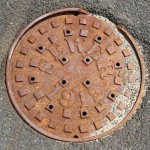 The famous Microsoft interview process (as described by William Poundstone in "How Would You Move Mount Fuji? Microsoft’s Cult of the Puzzle…") asks the candidate, among other things, to solve puzzles such as the quintessential question, “Why are manhole covers round?” It’s a question with multiple answers (see below), and the interviewer is looking for how the candidate approaches the question more than what answers are givens.
The famous Microsoft interview process (as described by William Poundstone in "How Would You Move Mount Fuji? Microsoft’s Cult of the Puzzle…") asks the candidate, among other things, to solve puzzles such as the quintessential question, “Why are manhole covers round?” It’s a question with multiple answers (see below), and the interviewer is looking for how the candidate approaches the question more than what answers are givens.
I view this question as a quintessential example of simplicity.
It’s an example of putting extra effort into the design and manufacture of something so that that the end-use is easier. If you take a look at the wikipedia article on manhole covers, you’ll see that they date back to Roman times. Those earliest design were rectangular, no doubt because they were easy to manufacture by hand. The evolution of modern, round designs represents a simplification in use, but it required more advanced techniques in forging and milling to produce.
In Extreme Programming we learned to look for “the simplest thing that works.” The lesson here is that you must be careful about that last word, “works.” Works for whom? This XP mantra should not mean for you to stop with the simplest thing that works for you to design and build, but rather to settle on the simplest thing for the end-user to use.
P.S. Just some of the many possible answers to why manhole covers are round:
- so they cannot fall in
- so it doesn’t matter which way they go when you set them back in place
- so one man can move them by rolling
- a circle forms the biggest opening with the least material, literally cutting corners
- so bicycle tires cannot get stuck in the crack between the cover and the road
- because the shaft is round (because round shafts are sturdy)